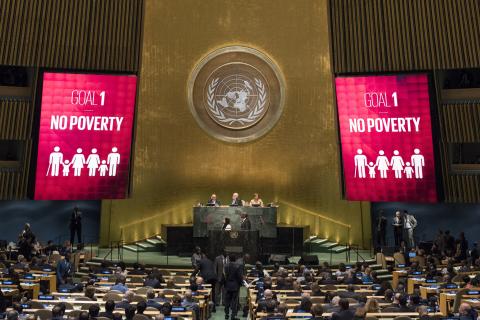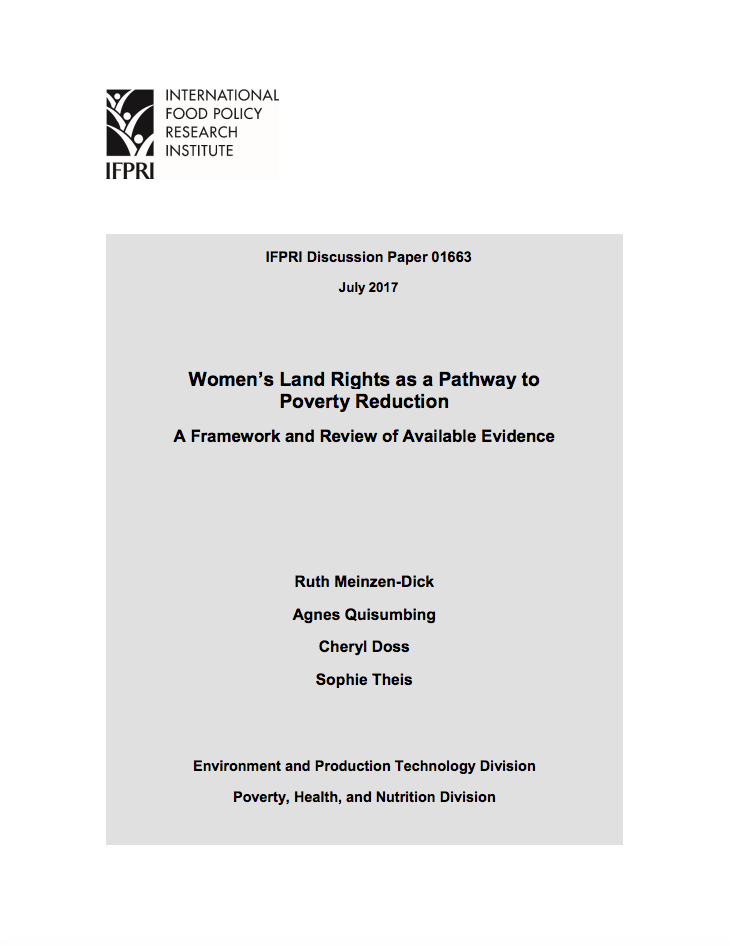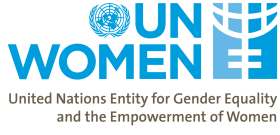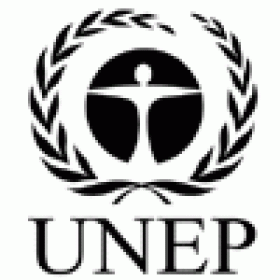
(a) Proportion of total agricultural population with ownership or secure rights over agricultural land, by sex; (b) share of women among owners or rights-bearers of agricultural land, by type of tenure
Last updated on 1 February 2022
This indicator is currently classified as Tier II. The Food and Agriculture Organization of the United Nations (FAO) is the main Custodian agency. UN Women, the United Nations Statistics Division, the World Bank, United Nations Environment Programme (UNEP), and UN-Habitat are partner agencies.
Unit of measure: Proportion of total agricultural population with ownership or secure tenure rights over agricultural land, by sex; share of women among owners or rights-bearers of agricultural land, by type of tenure
Why is this indicator important?
The empowerment of women and girls and the realization of gender equality are pivotal in achieving sustainable development, peace, food security, and other benefits for communities and societies at large. For rural women in particular, rights and access to land are needed to secure food and income for families, and to make women's voices count in community decision-making.
SDG indicator 5.a.1 monitors ownership and rights over agricultural land and is useful in profiling gender differences in agricultural land ownership and control in the sense of being able to sell or bequeath land, for example. As such, it allows to measure gender inequalities in agricultural land ownership and control. An increase in the percentage of women who own and/or control agricultural land indicates that progress is made towards achieving equal rights to land among men and women.
How is the indicator measured and monitored?
According to the metadata document, data collection draws on agricultural surveys and censuses or national household surveys. The indicator uses the agricultural population as a denominator with emphasis on the adult population living in households that have practiced agriculture over the last 12 months. This allows to capture agricultural households even if interviewed off-season. As of late 2021, ten countries have reported their official data on indicator 5.a.1.
In collaboration with UN-Habitat and the World Bank, FAO developed a joint methodology for the indicators 1.4.2 and 5.a.1 to facilitate efficient and cross-country comparable data collection. More information and additional data relating to indicator 5.a.1 such as the distribution of agricultural holders (by sex), distribution of agricultural land area owned (by sex), distribution of agricultural land value owned (by sex) is disseminated through FAO’s Gender and Land Rights Database. Disaggregated data by tenure type shall receive more attention in future reporting.
By Anne Hennings, peer-reviewed by Everlyne Nairesiae, GLII Coordinator at the Global Land Indicators Initiative (GLII) at GLTN, Un-Habitat and Clinton Omusula, Land Data and Knowledge Management Specialist at the Global Land Indicators Initiative (GLII) at GLTN, UN-Habitat and by FAO.
Official indicator data
The two sub-indicators measure how prevalent ownership or secure rights over agricultural land are in the reference population as well as the share of women among owners or rights-bearers. * Select "year" below to see the most recent data for more countries. ** To refresh the map with other official data, use the "Select an indicator" field. Type in the other indicators titles, as given in the table below.
Other related indicators on Land Portal
In addition to the official indicator data, the following indicators provide information concerning women’s tenure security, land rights, and access to land.
| Indicator | Min-Max Number of years |
Countries / Obs | Min / Max Value |
|---|---|---|---|
| Distribution of agricultural land area owned by sex (female - share%) | |||
| Formal recognition of women's right | |||
| Women's property rights are recorded (i) urban (ii) rural | |||
| 2016 - Women's property rights to land are equal to men's (i) in law and (ii) in practice |
Ten land messages from ILDC2020 that India needs to listen to
About 350 land actors from government, academia, civil society and business came together from more than 15 states and outside India to discuss and debate various land issues. In more than 30 sessions, about 150 speakers and panelists deliberated over 3 days around interdisciplinary land-conversations to generate important information and evidence for policy, practice and academics.
Ten important land messages that emerge from these land conversations are:
Realizing the 2030 Agenda: Tilting the Scales of Poverty in Favor of Vulnerable Communities Through Land Data
On 24 and 25 September 2019, Heads of State and Governments will gather at the United Nations Headquarters in New York for the summit Accelerating the implementation of the 2030 Agenda for Sustainable Development. This is a crucial event for evaluating progress towards the 17 goals and 169 ambitious targets countries have set to eradicate poverty, achieve food security, empower women, secure the planet and foster peace and stability.
Achieving the SDGs and other global commitments on land in the ‘age of data’
The ‘age of ignorance’
For a long time land governance, land tenure and land rights remained in the ‘age of ignorance’. We have known for some time that land governance is a key ingredient for social, economic and environmental development; what was missing, however, was the data. With the little information available to us at the time, we set priorities and crafted interventions for our course of work. Relying on a few rough figures meant that we were often repeating mantras and slogans based on loose, rather than on hard and reliable facts. Most notable among these was the often repeated and now widely disputed, “women own 2% of the world’s land”.
Case for optimism: Real-world success stories of indigenous and rural women claiming their rights
Across the globe, indigenous and rural women make invaluable contributions to their communities and toward global sustainable development and climate goals. They use, manage, and conserve the community territories that comprise over 50 percent of the world’s land and support up to 2.5 billion people.
Pagination
Women’s land rights as a pathway to poverty reduction
Land is an important asset for rural households, and having secure land rights is important for poverty reduction. Despite the large body of literature on the relationship between land tenure security, livelihoods, and poverty, most of this literature is based on household-level data and does not consider possible intrahousehold inequalities in land ownership.
Key Messages and Recommendations for the Expert Group Meeting on Women's Land Rights
We are a diverse group, women and men, from all regions of the world who came together in this EGM convened by Global Land Indicators Initiative, UN Habitat, Oxfam, Landesa, Huairou Commission and UN Women.
Power and Potential
Up to 2.5 billion people hold and use the world’s community lands, yet the tenure rights of women—who comprise more than half the population of the world’s Indigenous Peoples and local communities—are seldom acknowledged or protected by national laws.
UN Methodological Guidelines on the Production of Statistics on Asset Ownership from a Gender Perspective
The present publication provides national statistical agencies and policy makers with guidance on collecting, processing, analysing and disseminating individual-level data on asset ownership and control for the production of gender statistics.
Tenencia de la tierra, escurridiza para mujeres latinoamericanas
Las mujeres rurales de América Latina enfrentan aún graves dificultades en la tenencia de la tierra, lo que las mantiene en una situación de vulnerabilidad, pese a su peso creciente en la producción de alimentos y la seguridad alimentaria.
Pagination
![]()

Undertake reforms to give women equal rights to economic resources, as well as access to ownership and control over land and other forms of property, financial services, inheritance and natural resources, in accordance with national laws
Indicator details
The indicator is conceptually clear, has an internationally established methodology and standards are available, but data is not regularly produced by countries.
Key dates:













